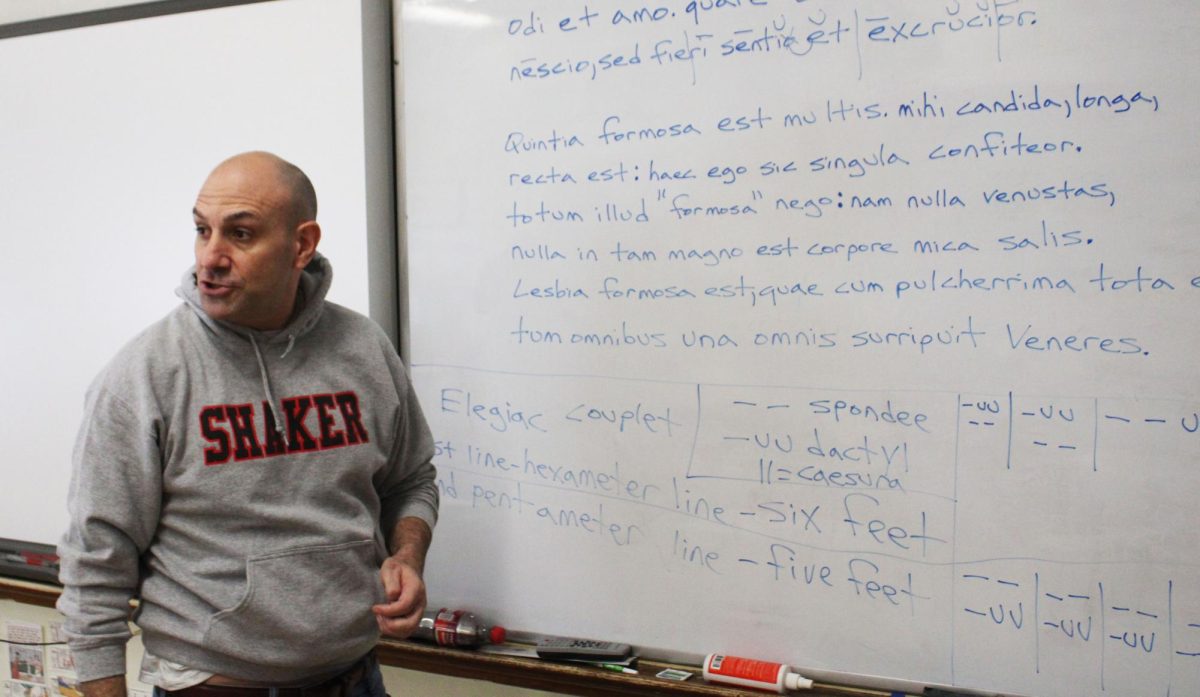Senate Bill 5, a bill that would have restricted union rights and affect public employees, met firm defeat at polls across Ohio on Tuesday, Nov. 8. Although the bill itself will never take effect, it leaves many teachers with the concern that their profession will be profoundly changed nevertheless.
“I would say that I feel threatened,” said Tim Kalan, an art teacher at Onaway and Lomond. “What I see is a pattern of treating education in a certain way, and I worry that things like Senate Bill 5 weaken public institutions.”
Kalan has been teaching art classes at Shaker for four years, and like many other teachers he believes that legislation similar to Senate Bill 5 is lurking somewhere not too far down the road. “I love my job now, and would still love it if SB5 would have passed,” Kalan said. “The problem is how legislation like that presents obstacles to the delivery of a good education.”
John Morris, an English teacher at the high school, feels that Senate Bill 5 was one of many bills that will present an attack on teachers. “I think it’s indicative of an environment and an administration that is trying to destabilize Ohio’s education,” said Morris, the Shaker Heights Teachers’ Association president.
Although Senate Bill 5 is dead, students may still face more standardized tests with the introduction of value-added evaluation. Enforced by the Ohio Department of Education, value-added measures will evaluate teachers based upon their students’ achievement. Teachers’ performance will be made public and easily accessible.
“The only problem is with value-added evaluation it’s very hard to establish a baseline of where we’re getting our kids to,” Morris said. Ohio is adopting value-added evaluation because it accepted federal money for education through President Barack Obama’s race to the top program.
Christine McBurney, chairwoman of the theatre arts department, said value-added evaluation of teachers is really about more than teacher ratings. “I think it has a similar goal of dismantling public education,” she said. “To base everybody’s success solely on the teacher and not the family, the culture, the values, is naive at best and at worst insidious.”
This year, the OED has tested value-added measure through a pilot program running in roughly 30 percent of Ohio’s school districts. Teachers’ effectiveness level, which is determined by whether or not students learn what is expected of them over the course of the year, falls into one of five categories: least effective, approaching average, average, above average and most effective.
In Beachwood, a district involved in the pilot program, nearly half of the teachers were rated “average,” while 23 percent were rated “above average” and 3 percent were rated “most effective.” Nearly 20 percent of the teachers were rated “least effective.”
Asked if they would recommend education as a future career, McBurney said that she would, but Morris said that he would not. He said, “I just didn’t anticipate this fight when I got into teaching.”
A version of this article appeared in print on 21 November 2011, on page 3 of The Shakerite.






